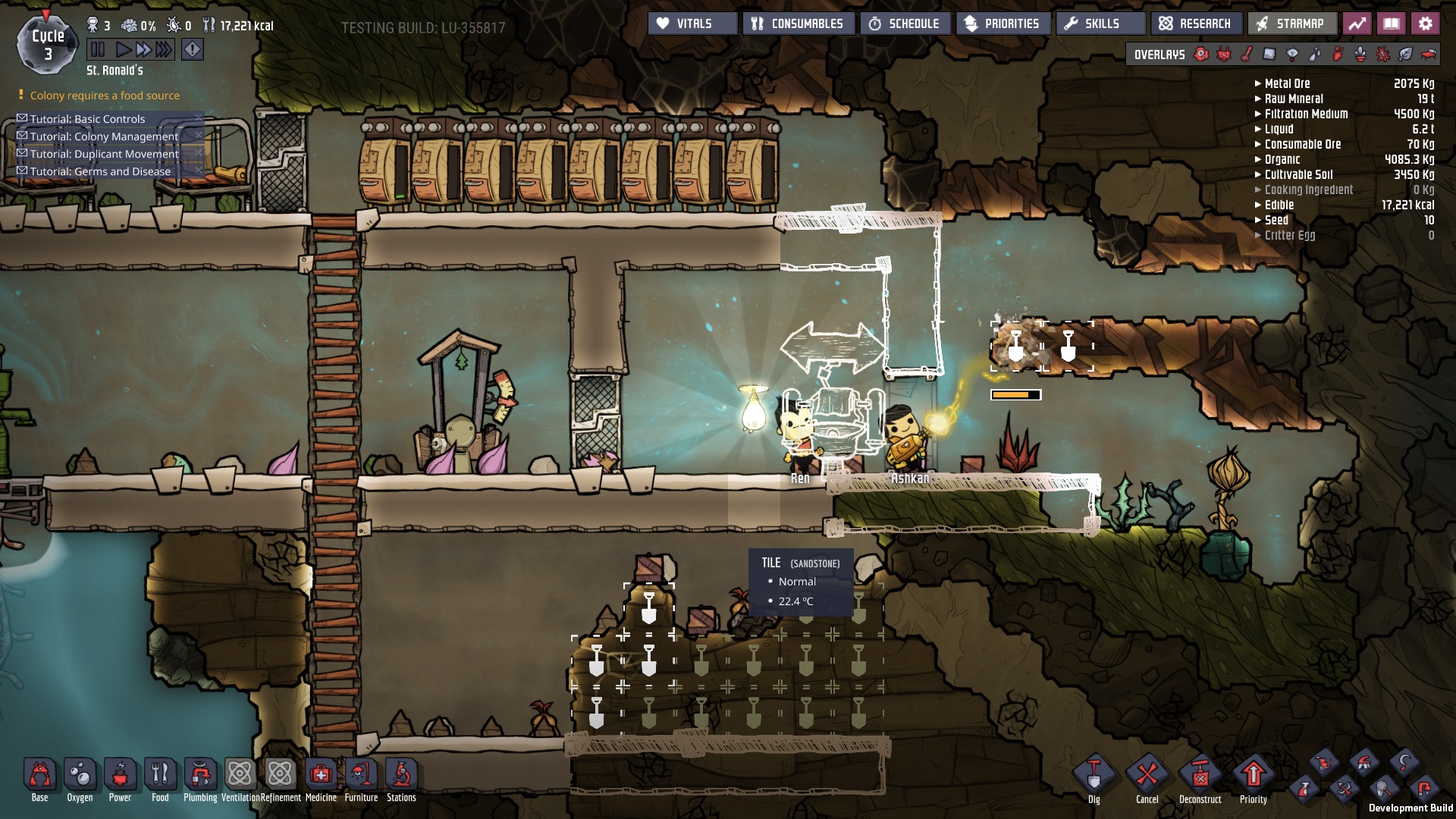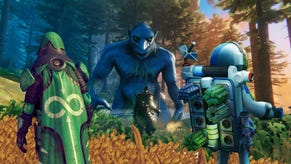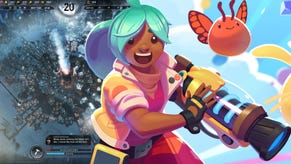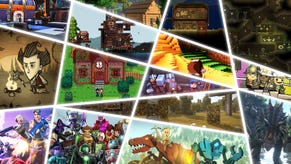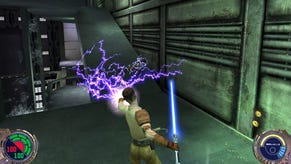Wot I Think: Oxygen Not Included
Are you a duplican or a duplican't?
During its two year stint in Early Access, Oxygen Not Included often came close to becoming one of my major time sink games. It’s a rich simulation of the kind I adore, with an enchanting art style, a unique atmosphere, and a labyrinth of features to discover. On a gut level, I love it. But then, for every time I’ve booted it up, there have been three where my cursor hovered over the icon before flinching away, as if I’d discovered mould on a sandwich or the HMRC logo on an envelope.
Brilliant though it is, ONI is an ordeal. It’s satisfying, but it’s stressful. I’d even go so far as to say - and here I risk invoking the scorn of the Legion of Geniuses, who wait in the darkness beyond the comment section - it’s a little bit too hard. But before the swollen-minded wolves take my fingers, let me snatch back the meat and explain myself.
ONI’s premise is very clean: some cute little people have appeared at the centre of an asteroid, and you have to keep them supplied with oxygen and food until they can research and build a rocket to escape. The thing that makes the game so clever is the same thing that made the title of Klei’s previous survival game, Don’t Starve, so funny: the fact that such a simple brief can be so harrowingly complex to fulfil.
In Don’t Starve, the business of not starving was accomplished through a top-down view, third-person action adventure where you had to discover increasingly dangerous locations and acquire resources from them. ONI translates this same gameplan to a side-on, cross-section viewpoint, and puts player agency at a remove through the familiar designate/place/prioritise controls of the colony management genre. Here’s how it goes:
It starts off easy. I mine out a little space for the dupes to live in (the game’s cute little colonists are called duplicants, or dupes), giving them a place to shit and a place to sleep, then get working on a hamster wheel to provide power to a research computer. While one of the dupes researches planter boxes for crops, I order a hand pump built above the nearest water cistern (so the dupes can wash their hands after shitting), and place a couple of oxygen diffusers to convert algae into lungfuel. Soon, I’m offered another dupe to join the team.
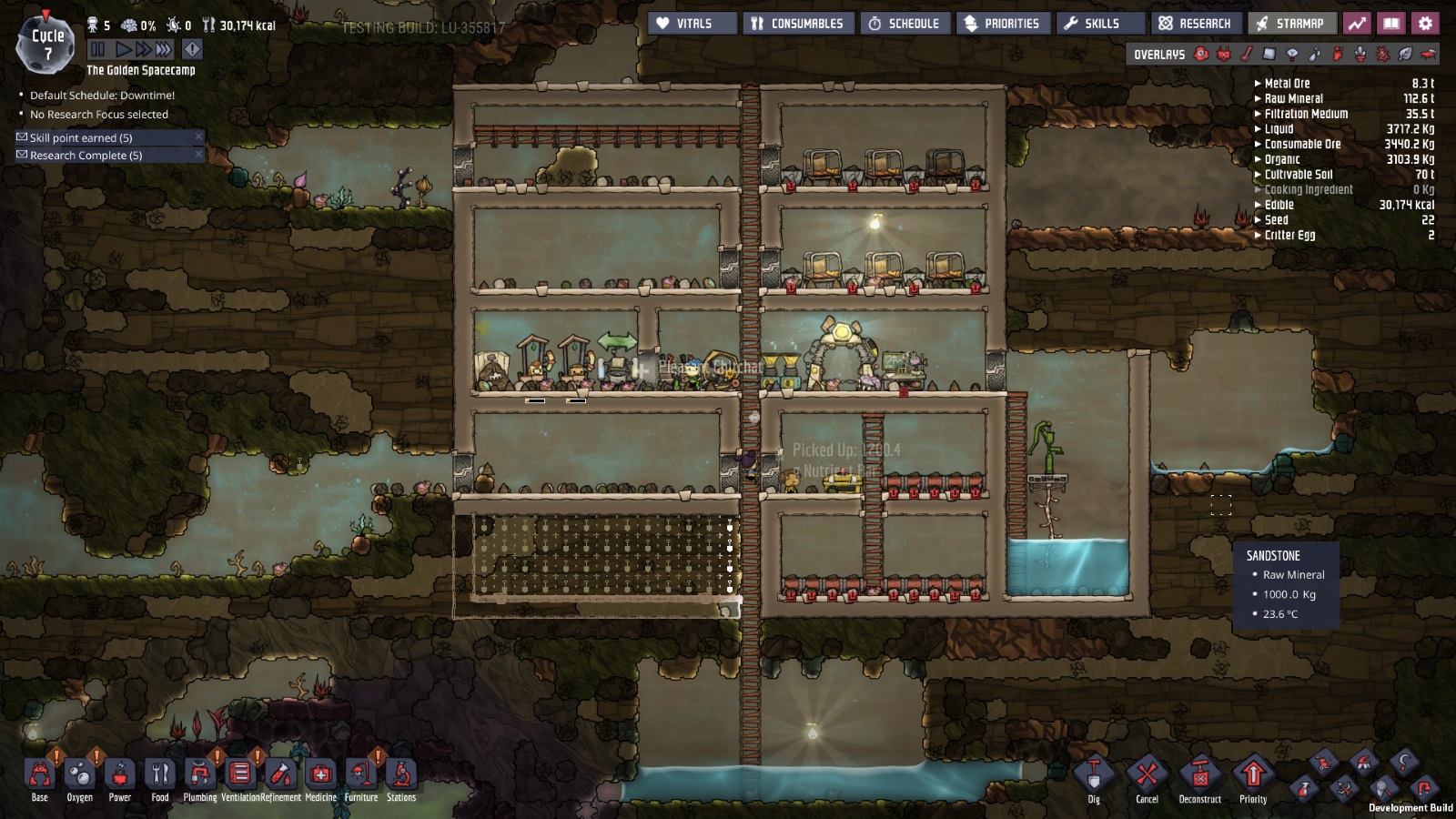
I listen to the jubilant, soft-edged synth soundtrack as I potter about, and enjoy the animations of the dupes as they jump over gaps, empty out buckets, and sneeze when they get cold from walking through water. I can see peculiar alien wildlife waddling round pockets of beautifully coloured gases at the edge of the screen, and I’ve got that deep sensation of wellbeing that comes from a constructed system working perfectly. Lovely stuff.
SMASH CUT TO: six hours later.
The dupes are starving. The meal lice are withering on their branches because the room they’re in just hit 31 degrees, thanks to the too-hot water being pumped into the hydroponics system from a cistern in a hot biome. To cool the water, I need to get the thermo aquatuner attached to the supply working - and it’s right over the other side of the colony, in the insulated chamber beneath the steam geyser. That chamber’s full of chlorine, so the dupes are having to hold their breath to work in there, slowing progress to a crawl. When they do finally get the machine built, it’s craving 1200 Watts - more than my current power grid can supply (this in turn reminds me that I’m running out of coal for the generators running the main grid - but that won’t matter at all unless I can get the food situation fixed). That aquatuner needs electricity, stat.
In a desperate hurry, I build an insulated chamber containing two hydrogen generators, a stack of batteries, and - in a flash of inspiration - a transformer, so I can siphon off excess power to the main grid if the coal runs out (two birds with one stone, right?). The hydrogen generators are fed from the massive tanks I’ve been filling with pumped-in exhaust from the oxygen-producing hydrolysis plant; it won’t last forever, but it should keep the aquatuner working til I can set up a natural gas generator by the geyser I’ve discovered up top. I’ll need to get oxygen up there for the workers, but I can think about that in a moment. And then maybe, when that’s done, I can get back to the long mission of digging up to the surface.
The aquatuner switches on - hooray! - but it’s only cooling the water from 64 degrees to 42 degrees, which is still too hot. And it’s breaking down. A quick look at its thermodynamic properties tell me it needs to be immersed in fluid in order not to overheat, so I send in the dupes to build walls around it, in order to collect the condensate from the steam geyser overhead. The dupes get scalded by the hot water. One dies. Genuinely mentally exhausted, I quit the game, knowing that next time I’ll quietly forget this save and start again.
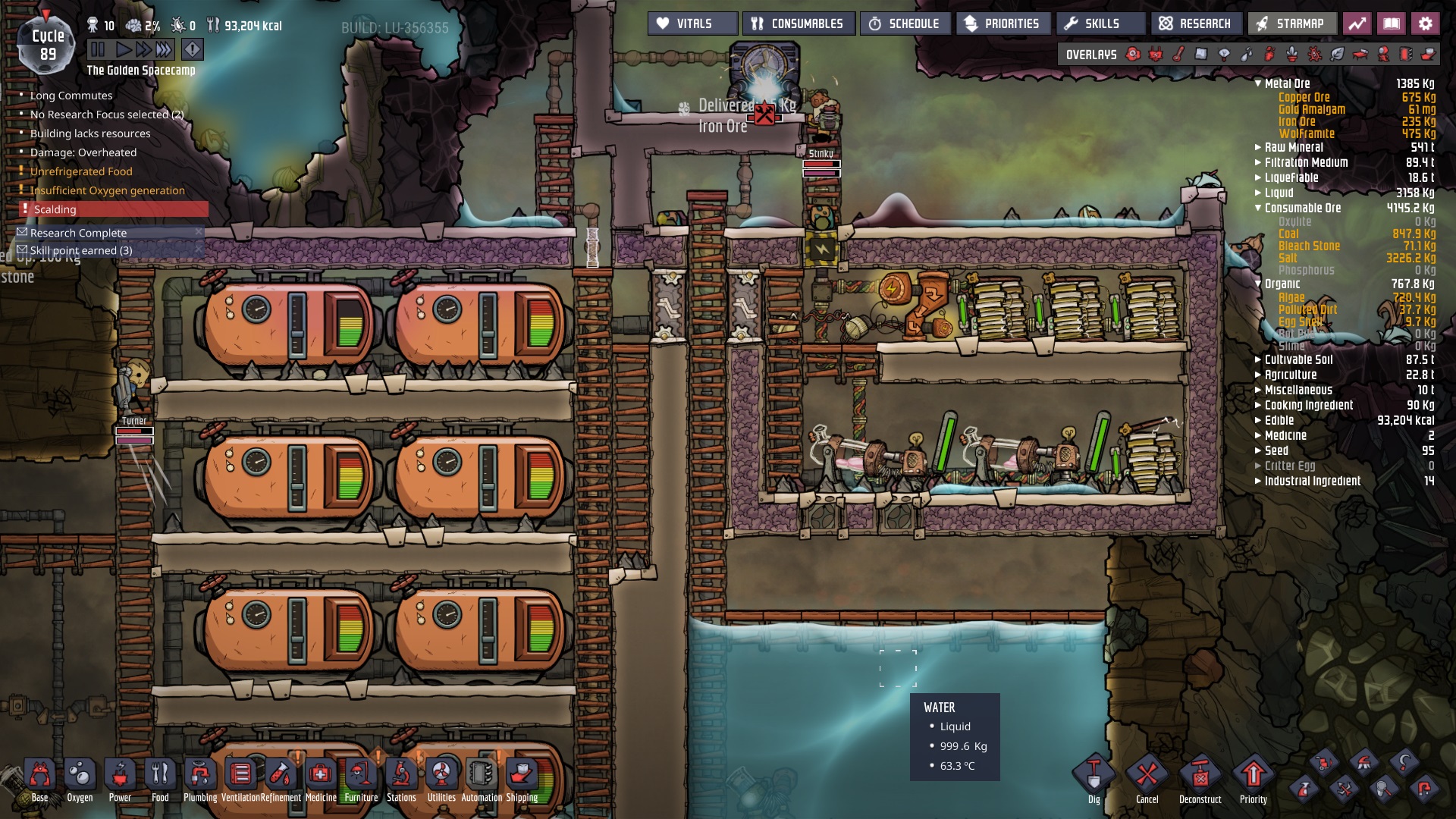
If that sounds fun, you will become fixated on this game. It’s essentially a machine for procedurally generating engineering problems, and due to the huge number of physical properties interacting in the simulation, they will never be the same twice. And solving them can be immensely satisfying. When you realise that the slapdash water processing rig you built to solve one problem can be modified to also solve that CO2 buildup you’ve been scratching your head over, you feel like a bloody lord.
The problem is, the solutions never hold. Just like the real universe, where entropy is king, there is no true equilibrium in ONI. Efficiently engineered setups may last longer than shoddy ones, but every resource eventually runs out (OK: except geysers), and every workable balance eventually tips. Master players have managed to beat the game world into theoretically sustainable structures, but if you’re not an expert, that’s not going to happen: you’ll find yourself constantly in crisis mode, like someone groundhog-dayed at the point of a Star Trek episode where the engine’s bungled and everyone’s trying to come up with a million-to-one repair plan.
I’ve no doubt this is intentional, and quite brilliant - but it’s not something I, at least, can sustain easily for hours. What’s more, as ONI’s Problem Cascade escalates, it forces you to take advantage of more and more advanced technologies just to cope. It’s a shrewd way of lighting a fire under tech tree progression, and achieving the rare feat of making a sandbox game into a pacy, driven experience. But unfortunately, it also requires an increasingly large understanding of physics and computer science.
Again, I’m sure someone will show up to scoff at the idea that some people might not understand joules, watts, thermal conductivity, specific heat capacity and XOR gates, but hey - some people don’t, and the game doesn’t do a vast amount to explain things. I’ve got a pretty comprehensive science education, and I struggle with it, especially because I’ve had to learn how these concepts are abstracted and adapted to work within the game’s simulated world. When it gets to automation, logic circuits, and other computery stuff (the bane of management games for me, as I never understood it at school), I’m left pretty much in the dark - but I know I’ll need to somehow master it all to win.
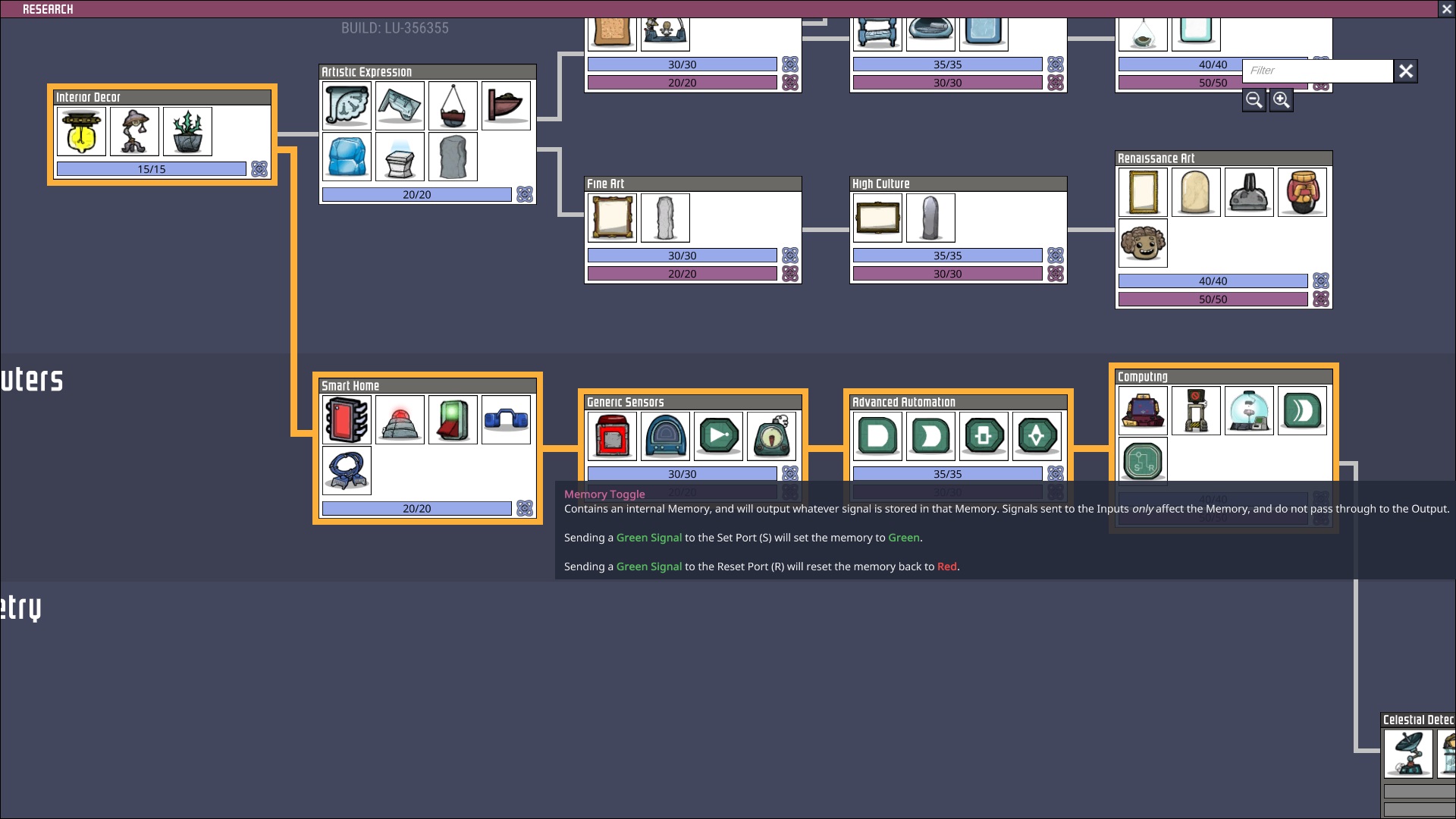
Yes, trial and error will teach you a lot, but given the fairly hectic demands of survival, you’re unlikely to have the dupe-hours - or the brainspace - free to quietly teach yourself power grid optimisation or automated material sorting in a free corner of the map. So far, in every game I’ve played, there comes a point where it’s just easier to start again with the knowledge I’ve learned, and try again to get further towards rocketry before being savaged by entropy.
And you know what? That’s arguably a good thing. It gives the game longevity, and even makes it educational, in a way. I’m just not sure how motivated I am to keep throwing myself at it. Some people are, however, and if you suspect you’re wired in the right way for it, ONI is a must-buy. The sheer variety of content added over the last two years is phenomenal, and there’s no question of the value offered at twenty quid. The launch update in particular is enormous, offering a choice of worlds to start in, three new biomes, and paragraphs worth of new features. And Klei will, as with Don’t Starve, continue to add content post-launch.

I suppose for me, the disappointment is how wasted a lot of the game’s charm is. It has beautiful, curious alien biomes with odd little inhabitants who can be tamed and bred - but I haven’t bothered because it hasn’t yet been necessary for survival. It’s got space travel, but I won’t ever see it without hours and punishing hours of solving physics exam questions. It’s got gorgeous sound design and a splendidly hand-drawn game world, but in the end, it all fades into irrelevance next to the serious work of playing.
Most of all, the simulated personalities, habits and appearances of the dupes themselves feel like complete wasted effort. Beyond the first ten minutes, you won’t care about them as anything beyond blank drones with slightly different abilities. I get the feeling Klei began with the intention of leaning more on the “story generation” angle of colony sims like Rimworld and my beloved Dwarf Fortress, but this fell by the wayside. In any case, it’s a shame, because even though all the effort of playing is invested in trying to keep the dupes intact and find a way for them to escape, I have no sense of them as people. When they die, I feel nothing but momentary irritation if I’ve lost someone with a useful skill.
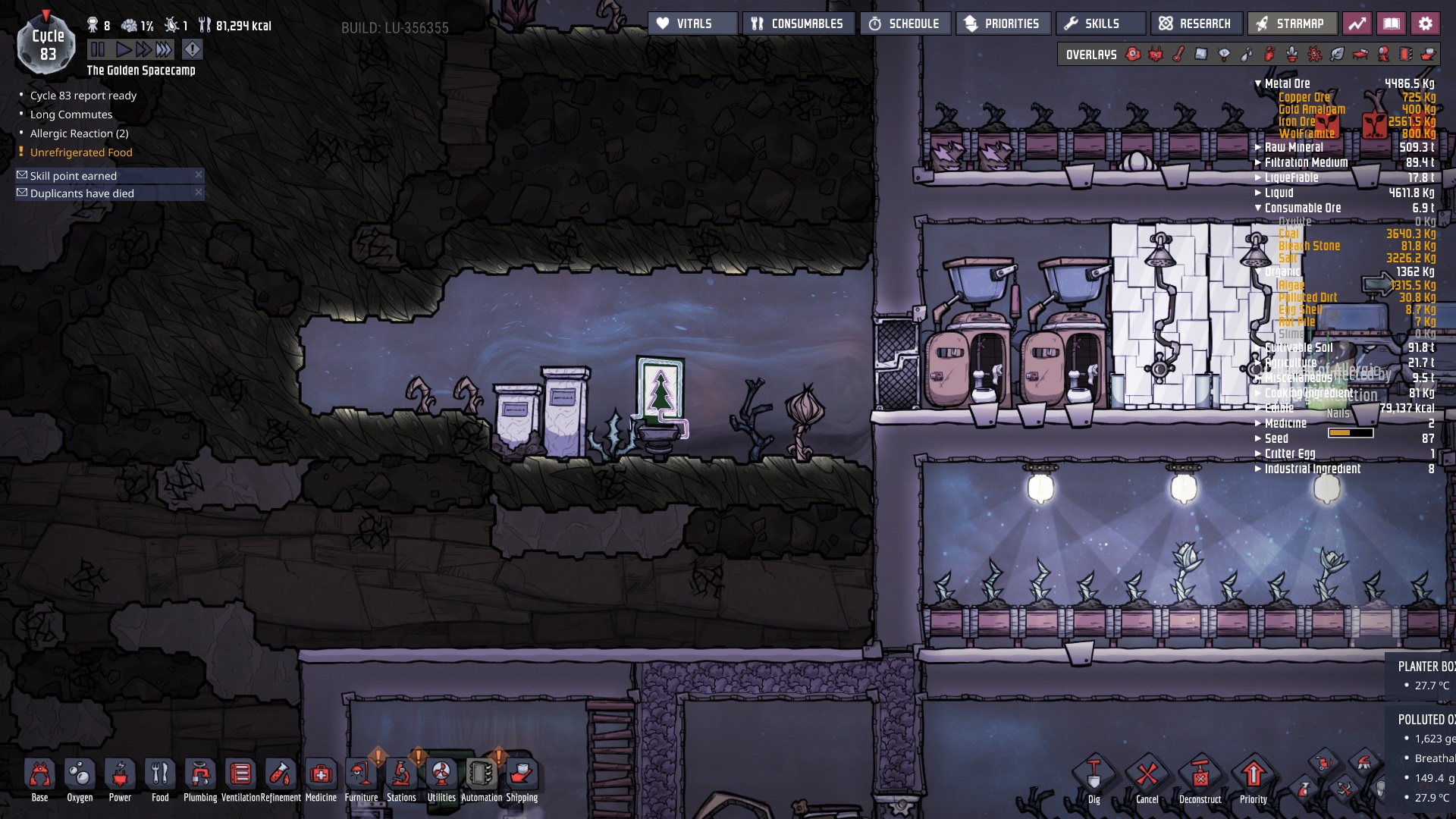
Perhaps the game’s story would offer some commentary on this - the dupes are called “duplicants” after all, and since day one in Early Access, there’s been a pervasive sense that they’re being sent to the asteroid to accomplish something for a remote presence. But I wouldn’t know anything about that: for while ONI apparently does have a plot now, I haven’t had a moment to look for it in between frantically jury-rigging life support projects.
It’s funny: when I started typing this review, I was relieved to be able to put ONI down after the morning’s aquatuner disaster. Now I’ve finished, however, I’m already thinking about how I could avoid the problem next time. I might just have a quick tinker over lunch.
